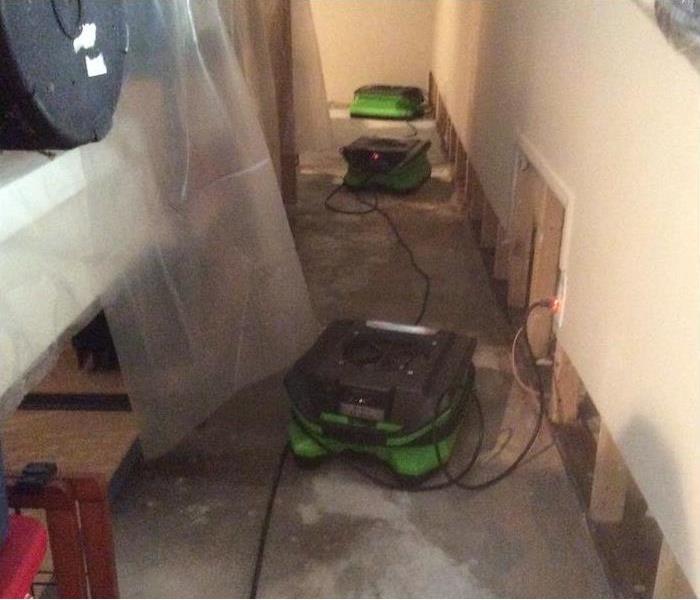What are the Main Types of Closter Water Damage Equipment?
6/30/2022 (Permalink)
 Water damage can spread quickly and create a lot of damage in your Closter home. Contact SERVPRO today for all types of remediation assistance.
Water damage can spread quickly and create a lot of damage in your Closter home. Contact SERVPRO today for all types of remediation assistance.
SERVPRO technicians Bring the Latest Water Mitigation Tools to Closter Jobs
According to a report produced by the Environmental Protection Agency (EPA), the average water cleanup in a home causes over $11,000 in damages. An average of 14,000 persons are affected by a water emergency every day in the United States. Besides the knowledge a professional restoration services company brings to the scene, professional equipment can make a marked difference in the outcome for the property and contents after water exposure. The most commonly seen devices include:
- Extraction
- Dehumidification
- Drying
SERVPRO technicians have extensive training for handling water damage within Closter properties. Before the extraction begins, the technicians nail down the location of the water within the structure using their sensitive moisture detection equipment. It takes mere minutes to layout the actual scale of the water cleanup needs within the property. This attention to detail ensures that all areas within the worksite get adequately cleaned.
What Factors Affect the Time Needed for Water Cleanup?
While each water restoration job that SERVPRO handles is unique with houses, contents, and water damage effects being different, there are common things the technicians apply to each service such as:
- Noting the type of water within the structure
- The level of probable contamination
- The amount of moisture
- The time passed since the water entered the house
What Equipment Helps With Wet Flooring?
During a water damage restoration service, one of the most important things to determine is whether the structure's moisture affects the subfloor or within the house's walls. All flooring types with water damage can benefit from the tools that SERVPRO technicians use regularly. Extraction goes quickly when the technicians use the pulling power of their portable pump units. When necessary, the technicians can use a truck or van-mounted units to remove large quantities of water. However, the hoses needed begin to lose suction when extended beyond 150-feet, making the portable pumps ideal for most residential or jobs where vehicle-mounted units are not the most helpful method. Submersible pumps are the go-to water removal method for situations where the water within the structure is greater than two inches in depth.
Drying a wet carpet may be accomplished by using special techniques known as floating or tenting, which concentrates the airflow directly on the damp carpet portion. Hardwood flooring carries its challenges when wet. The wood can crack or have permanent damage if the moisture gets removed too rapidly. SERVPRO IICRC certified technicians handle it very carefully to ensure that the drying process goes slow and steady with frequent monitoring of moisture levels.
No matter what type of drying equipment or method gets used against water damage, the dehumidifier is a crucial part of the process. It stops mold and mildew from having a sustainable environment and rapidly lowers the interior humidity levels.
In situations where the potential for airborne contaminants exists with water damage, such as with a sewage backup, the technicians often utilize negative air machines. These units pump tainted air outside the worksite area and create a negative air pressure vacuum effect within the controlled area.
Closter residents trust SERVPRO of Northeast Bergen County at (201) 244-0100 when they need help with water damage cleanup and restoration for their properties and contents.






 24/7 Emergency Service
24/7 Emergency Service